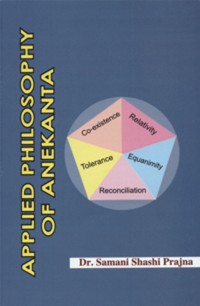Every religion aims at raising the quality of moral and spiritual life of man. But the root cause of prevailing tensions is self-righteousness and belief of certain leaders of religious movements and campaigns that their religion alone is supreme and can prove to be the panacea for all the problems of mankind. The urgent need of today is removal of seeds of hatred and malevolence within the minds of religious communities. There are institutions in this world, for removal and eradication of physical diseases. But the supreme need of the hour is the establishment of an institution for eradication of communal hatred and bigotry, from the minds of men, the disease that is spreading into vitals of society and threatening the future of mankind. The present scenario really lacks the tolerance of viewpoint of others. Today Islamic fundamentalism, Hindu supremacy, Christian self-righteousness, Buddhists Escapism, is adding to our problems instead of bringing any solution. What we need today is anekāntic perspective to tackle the global problems so that the future of humanity is not jeopardized. In my view the founders of religions have never been bigoted and narrow-minded. They have been truly liberal in their outlook. It is only misguided followers, who have created gulf between adherents of different religions.
Today religious leaders are so dogmatic in their views that they are not in a position to give respect to others viewpoints. They claim that salvation is possible only by following their means and principles, i.e. 'māmemkaṁ saraṇam vraja'. Application of anekānta in the religious sphere will mean to understand and assimilate view point of all religions, communities, sects, and so forth. Different preceptors of different religions developed, different methods all around the world during different periods of time. But due to pre-conceived misconceptions and mental makeup towards their teachers and their own egos, they compel the followers to believe their 'ism' to be the only as the final and complete truth, which resulted in the unwanted communal enmity between different sects. In this context, it will be pertinent to mention Shri Ram Janmabhūmi and Bābari Masjid conflict which is horrifying illustration of overriding fanaticism. So one perspective alone will not do. Mahāprajña says, all the activities in life and society are built on the bricks of opposing principles. If these opposing bricks were not there, there would be no activity, no civilization.[1]
History bears witness to the fact that religious intolerance has been the cause of unlimited cruelty and bloodshed. Every religion teaches to love and no religion teaches to kill and yet thousands of lives were taken in the name of religion over an issue of no rational importance. The reasons which create and develop communal outlook, religious intolerance and narrow mindedness are as follows,
- Jealousy,
- Desire for fame
- So called ideological differences,
- Difference in perception of behaviour pattern
- Humiliation or degradation inflicted by some previous sect or person.[2]
The theory of anekānta does not advocate unification of all sects by destroying or amalgamating them all but it is an effort to inculcate religious tolerance by understanding the similarities hidden within the seeming external differences. The Sarvadharma Samabhāva is the basic purpose of anekānta, which can become practical through the action plan of Surat Spiritual Declaration signed by religious leaders.
The action plan of "Surat Spiritual Declaration" was formulated under the auspicious presence of H.H. Ācārya Mahāprajña, the spiritual leader of Jain community at Surat on 15th October 2003 on the birthday of A.P.J. Abdul Kalam the Ex. President of India. "Unity of Minds" was established in the Surat Declaration in the auspicious presence of 22 different religious leaders. The SSD Action plan envisages Five Garland Projects. The emphasis of five projects were
- celebration of inter-religious festivals,
- (multi-religious projects,
- health care and employment,
- imbibing value-based education in schools and
- encouraging interfaith dialogue among religious/spiritual heads.
In order to pursue the above in a sustained manner and to co-ordinate all activities, a national level independent and autonomous organization was set up, duly managed by religious/spiritual leaders as well as scholars and enlightened citizens. This organization was named "Foundation for Unity of Religions and Enlightened Citizenship" (FUREC) and it was launched by the President Dr. A.P.J. Abdual Kalam on the birthday of H.H. Ācārya Mahāprajña, the 15th June 2004 at Rashtrapati Bhavan, New Delhi. FUREC functions, at three levels of Human Existence.
- At the level of the individual, it seeks to develop a common agenda for the development of a violence free individual or the Enlightened Citizen;
- at the level of society, it seeks to eradicate poverty through economic upliftment, harnessing the teachings of spirituality;
- at the collective level, it seeks to bring about better understanding between the different faiths/religions and bring about amity between them.
Understanding of different religions, cultures and value systems can also help significantly in cultivating respect and tolerance and scope for inter-cultural dialogue.
For Jainism, role of religion is to unite all through love and respect for one another. We must also work for the survival of religious diversity. Let every religion exist and flourish, let them serve the world in their own ways. Flourishing together is the secret of peace. Unity-in-diversity is the lesson of life. "So let us guide ourselves and our followers not just to tolerate, but to respect other persons points of views and religions, not just to exist, but to co-exist, not just to hail, but to help others. We must not prosper and progress at the cost of others, but sacrifice a part of ourselves for the good of others, because in the good of others lies our own, in the progress of others rests our own and in the joy of others abides our own", says Ācārya Mahaprajña in his address at Surat Spiritual Declaration.
 Dr. Samani Shashi Pragya
Dr. Samani Shashi Pragya

